
|
| Accept Cookies | Customize | Refuse Cookies |
Davidtrt www.juzaphoto.com/p/Davidtrt  |
 | Nikon 28mm f/3.5 Ai Pros: HC auto version: backlight resistance, stars already at f/5.6, sharpness in the center, sharpness from edge to edge when closed, character. Cons: HC car version: yield at the edges, minimum maf distance of 0.6m, requires slim filter not to vignette. Opinion: HC car version (different from the AI version): on paper a useless or almost useless lens, and instead over the years I have taken some of my best shots of it despite a set of over 20 lenses between vintage and modern. Exceptional for photos with the sun inside the image because of the absence of flare even in the most difficult conditions, the excellent contrast, and the creation of stars even at normal apertures. So in fact it is my lens for panoramas with the sun or on a tripod in the evening. For the rest I use version 2.8 AI. Excellent in the center at f3.5 as well as at f11, where it saturates the 12 mp of the d750 without problems at all distances. At the edges, on the other hand, it is absolutely bad when open, but closed at f8/11 it excels from edge to edge on a par with the best optics, with only a hair of AC that can be eliminated with 1 click. Also good for set portraits, where it has a lot of character and manages to isolate the subject more than you would expect, due to the strong difference in center/edge sharpness and strong vignetting. Unfortunately the minimum maf of 0.6m is limiting in many situations. I find it excellent in BN, as others have also said. sent on March 17, 2025 |
 | Zenit MC Zenitar 16mm f/2.8 Fisheye Pros: Razor-sharp at closed apertures, size. Cons: Backlit contrast, wide open performance, ugly stars, so-so colors Opinion: It covers 180 degrees on the diagonal (!). I state that I have an old type example, perhaps from the 90s, the one with the distance scale in green to be clear. At f2.8 it has any kind of existing aberration, while at f4 it already improves a lot but remains unusable at the edges. At f5.6 it is very sharp in the center and has a fair amount of homogeneity. The maximum is reached at f11/16, where it has an extremely high sharpness (about 24mpx) up to the extreme edge. Judging by online tests it seems to be the sharpest lens in its category at closed apertures, and the worst at wide apertures. Backlit contrast feels the weight of the years (at the level of the Nikon premulticoating of the 60s, perhaps even worse), often with an evident drop in contrast in the center of the image that is like a big flare, and so-so colors. Build quality good only to the touch, because it actually dances everywhere. The rear filter is part of the optical scheme, without this it does not focus infinitely, so check when buying that there is at least the neutral one. I used it a few times at night in the city and I was not thrilled, moreover the stars it creates have only 6 points and also poorly defined, but I do not exclude that you can come up with something good. I recommend it for fun or for taking high-resolution edge-to-edge photos at closed apertures in light conditions that are not difficult. sent on October 28, 2024 |
 | Nikon 50mm f/2 AI Pros: Optical performance beyond expectations at all apertures, nice to use. Cons: Well I would say nothing for the category. Opinion: I use it on the D750, so my review is related to the use on the 24mpx of this machine. Considered by many to be the best 50mm nikon ever produced, at least excluding the various 1.2 and afs. I did not own them all to confirm it but I can say that it amazed me a lot. Contrary to all the 1.8 that came after this is a lens designed to favor a homogeneous yield up to the edges even at full aperture, in this regard it also beats the 50mm 1.8G (which I had for a while in parallel to this f2 and then sold). So I think we can say that it is the most homogeneous nikon 50mm ever. The G wins, and only in critical situations, by contrast and perhaps sharpness in the center to TA. The blurred is the same as that of the G and judging by the photos also of the various 1.8 AI, which is not soft but is still characteristic and allows creative realizations with a discreet soap bubble effect, better sure than the bad AF. The front blur, for what matters, is so perfect that it could be that of an 85mm f1.4D. Synthesis sharpness: a TA already valid in the center and more than discreet even at the edges. At 2.8 already very sharp in the center and very good at the edges. At f4 an absolute blade over the entire frame. Better than the D (which I had and never loved), with which it does not share the loss of contrast and aberrations to TA, nor the construction of the kinder egg as a surprise. However, it has a bit of distortion (like the G, while all the other 1.8 are exempt). A sensitive spherical aberration at TA combined with well-corrected chromatic aberrations mean that in the portraits it returns a very soft skin but at the same time sufficiently well defined. Here I would say that it is the main feature of this 50mm together with the aforementioned blurred and the homogeneity on the frame. Build quality of the golden age, any self-respecting Nikonist should own at least one Nikkor MF. Ultimately I think it is significantly better than the 1.8D and in my opinion he plays with the G. sent on December 28, 2021 |
 | Zenit Helios MC 44M-7 58mm f/2.0 Pros: Sharpness in the center, contrast, colors, construction, swirl Cons: Sharpness decays quickly as soon as you move away from the center Opinion: I have the 44M-7 version that I use on nikon D750, exclusively for portraits with swirl effect. With ultra-thin adapter comes to focus at about 1.5m, I bought a mechanically modified specimen to get up to 4 meters (which covers almost all situations to create the swirl, besides it would touch on the mirror) and transmission of the value of the aperture. Without therefore the retreat of the rear lens alone which instead would worsen its quality. Sharpness in the center really remarkable, at f2 is probably better than all the various manual nikkor 50mm with the same aperture, too bad that it decays very quickly as soon as you move away from the center. To have sharpness up to the edges you need to close quite a bit. Fortunately, even at TA the contrast is high and the chromatic aberrations are well controlled, which contributes a lot to making the photos pleasant even when the sharpness is not at the top. I took some shots in autumn with the sun low with colors so beautiful that already in the room they seemed post-produced, but I read discordant opinions about it so maybe it depends on the room or the conditions. Tank construction, aesthetically essential but quite well finished. Corsa maf long as the nikon pre-AI and AI (so not short as the AI-S), takes about 3/4 of a lap, feeling of the golden times. Ridiculous price for what it offers, if you like to fiddle with vintage lenses is a must buy. sent on December 21, 2021 |
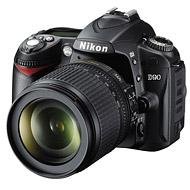 | Nikon D90 Pros: A tank of reliability, semi-pro body of excellent workmanship, performance for the time, large viewfinder, display on the back large and with a lot of info, battery life. Cons: The tires are deformed and detach easily, no fine AF calibration. Opinion: It was by far the best SLR in the segment of the time, it was adored by all its owners because of the great usability given by its body, reliability and the total absence of bugs (it was never necessary for nikon to make a firmware update). The battery lasted a lifetime. A big leap forward in the segment thanks to the high-resolution display and the high-performance sensor. A real training ship for those who wanted to look at the serious photography, when I switched to the D750 I immediately felt at ease, I even regret the display on the back that was larger and contained more information, in addition to the battery life about double. The only thing I really missed was the fine adjustment of the AF that penalized a bit the use with superluminous. I have used it for many years, I have traveled there for a total of over 1 year throughout Asia where it has accompanied me in extreme conditions for temperature, humidity, sun, sand, and more without making a fold and it still works in every little part. Only the tires (including the doors) tend to expand and consequently to detach almost immediately, so you have to trim and glue them. Even the battery (never replaced) still works like the first day. I did not believe tanks could be made of plastic. Compared to modern sensors it pays above all the colors lacking in shades in the midtones, so if it is not exposed to perfection or the conditions are not optimal they appear off or shot (especially red, which easily goes into saturation), and a poor cleaning of the files even at medium-low iso, which was fine on fullhd monitors of 10 years ago but if you look at them today on a 4k monitor they show their limits. To learn how to photograph is still excellent and better than any d3x00 or d5x00, but only if given away otherwise it is better to go to d7000 or d7100 which still cost very little and are a big step forward. sent on November 23, 2021 |
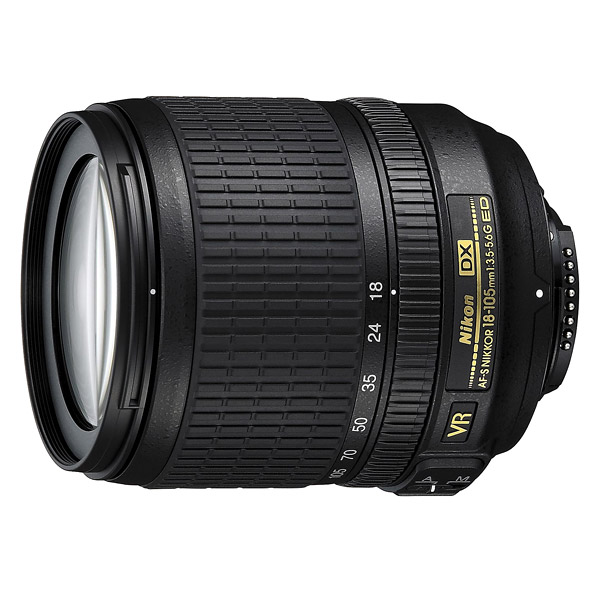 | Nikon AF-S DX 18-105mm f/3.5-5.6 G ED VR Pros: Reliability, optical rendering valid at all focal lengths and apertures throughout the frame, focal range, stabilizer. Very competitive overall package. Cons: Deformation, autofocus now a bit obsolete for precision and noise. Opinion: "It has the plastic bayonet" among the most recurrent criticisms, yet it clicks and does not break. I could be the one who put this lens on the rope more than anyone else as I used it assiduously on d90 for 6 years of which 1 spent traveling in Asia like crazy in extreme conditions for temperatures, sand, humidity, various vibrations and think a little, it still works great (bayonet included ...) and also looks good, giving me good shots even in difficult conditions. So the impression is slightly fragile, but in reality it resists and how. I think it is the most underrated lens of the whole park dx nikon, the best among the dark zooms as better than the 18-55 for performance and focal range, better than the 16-85 because it offers practically the same performance costing half, and better than the 18-200 because this drops to too many quality compromises, weighs more and cost 3 times as much. Now it is better to take its new version, the 18-140 which has the same performance and an extended range. Now I have a d750 with a set of fixed f1.4 and a 24-120 f4 that weighs twice as much, and this lens so light I miss. It does not create the magic of fixed 1.4, but we would lack more, but it is quite sharp and constant at all focal lengths, has beautiful colors, contained aberrations, a remarkable resistance to backlight and a reliable yield in all conditions. The focus ring has play and is almost indecent to use. Zoom quite smoothly. In general, a lightweight, versatile, optically valid and economical lens in order to spend what you save on fixed lenses. At the moment my father uses it on d3200, so he has been shooting non-stop for 12 years (despite the plastic bayonet...) On the d90 it was a bit limited in use at optimal light conditions, but on modern cameras with better high iso yields its field of use extends. sent on November 23, 2021 |
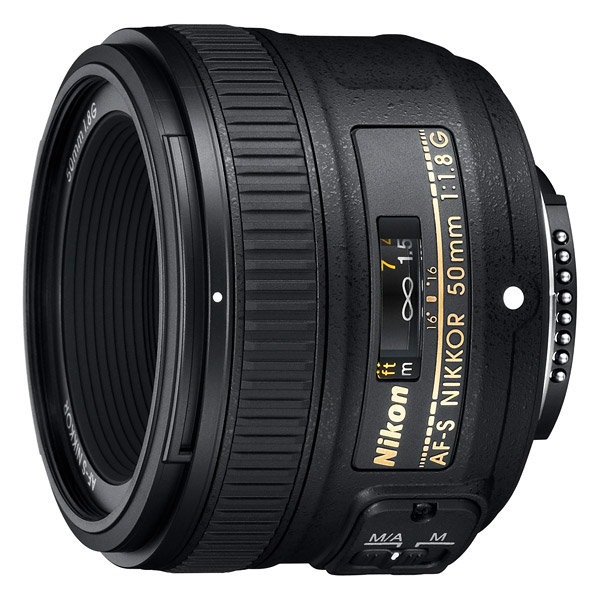 | Nikon AF-S 50mm f/1.8 G Pros: In terms of sharpness at diaphragms a little closed is at the highest levels and even open it copes well. Easy to use and hardly misses a shot, general rendering very good and balanced without even an obvious defect. Quality to the touch more than valid, rubber gasket around bayonet. Cons: Average blurred quality, but more than adequate to the lens class Opinion: Used on d750, the best fixed for quality price, a real f1.8 that knows how to give excellent shots. Taken to replace the D, with whom it has never been love, it is an improvement from almost all points of view and is worth by far that few extra money. Compared to high-end lenses it holds its own for maximum sharpness (and often beats them too), obviously sharpness from open and blurred and do not create the same magic with every shot but often goes close to it. At close distances, at which it is optimized, it is however remarkable even at full aperture and I have shots that are the envy of the 85 1.4 G. Personally I use it little in favor of other fixed that cost from 3 to 10 times as much and that return a greater three-dimensionality especially because of a better managed fire-out of focus transition, but this remains a valid alternative to go light while maintaining a high quality spending very little. If you think that the only 50mm AF really more performance is the sigma art... In addition, the hood can be left at home as the lens is already quite protected of its own, as well as resisting even against the backlight quite well. Very good build quality for the lens class, except for the feeling of the focus ring which is a bit rough. sent on November 23, 2021 |
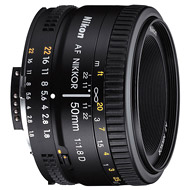 | Nikon AF 50mm f/1.8 D Pros: Excellent sharpness at closed apertures, zero distortion, light and compact, chromatically valid for portraits. Cons: Good only from f2.5 up, blurred, construction. Opinion: Clearly for price and size we could not talk about defects, but since there are already many related reviews I prefer to make a review in an absolute sense. I had it for years on d90, then for a while on d750, sold to take the G: it was never true love. Many talk about it very well, but we must bear in mind that for many it is the first fixed after the 18-55, while those who have to do with both fixed lenses and higher class zoom know well that the comparison is out of place. It is no coincidence that it is considered by most to be the worst Nikon 50ino ever. The mistake is to consider it a 1.8, if you considered it as a 2.5 would change many things (but not everything). If used at large apertures it is an inconstant lens, in the sense that it brings out very beautiful photos, but only in optimal conditions of light / subject / background / focus / ass (and on the internet you will see only these). In fact, the truth is that in most conditions you will throw a lot of photos, because it is simply a poor lens to be open from all points of view, blurred close to the fire in the first place. Let it be clear that even at 2.8 and above you can make excellent portraits. Quite the opposite if used closed, in fact f4 is a blade in the absolute sense, great value 30 years ago when cheap zooms were very scarce but nowadays even a kit lens does not fare badly when closed. I go on the practical, it has a beautiful rendering of the complexion (chromatically neutral) and at the most open diaphragms it is decent only at short distances, so if your purpose is to make close-ups or half busts with strong detachment then maybe something really good can do it. It is very valid for panoramas, in general wherever you want supernitide photos from edge to edge at closed apertures. If your purpose is to take pictures with isolation of the subject it is better to spend 2 extra wedges and take the G, which is clear is always an economic lens but at least you can use it at full aperture at all distances and always returns contrasted colors and with a discreet blurred. Otherwise if you have a right camera (equipped with fine AF calibration), you are able to handle an f1.4 and you want the real magic, spending about € 250 in the used and with a slightly greater weight the Sigma Art 30mm f1.4 crushes them both (both optically and physically, given the pro construction). sent on November 22, 2021 |
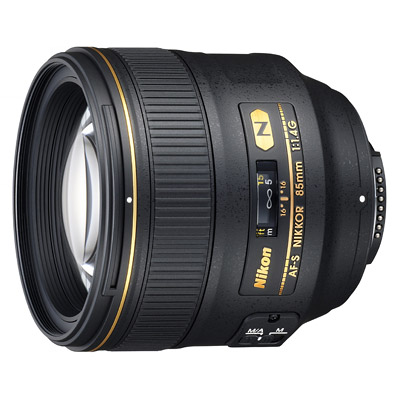 | Nikon AF-S 85mm f/1.4 G Pros: Sharpness over the whole frame, contrast, very soft bokeh both behind the subject and in the transition, aberrations completely absent already from f2. Cons: Color rendering a little too much tending to heat, bokeh fringing sensible, blurred front so so, price of the new out of the market. Opinion: Given that obviously we are talking about a lens of the highest level, the mix of performance, weight and autofocus accuracy make it the most versatile 85mm f1.4 for Nikon. I bought it because coupled with my D750 I wanted maximum performance while maintaining portability for my travels and in fact does not miss a beat, almost boring for those like me coming from the previous D. Saturated colors like all modern lenses, it gives excellent shots even in sluggish light conditions where the previous D showed a bit 'the side. However, it maintains a good fidelity even with a temperature significantly shifted towards the heat. Chromatic aberrations very well corrected, a nice step forward compared to the D, except for a bit of imperfection at TA in the area close to the fire where I would have expected an improvement compared to the predecessor and instead it is identical. Easier to use and more versatile compared to the D, compared to this it pays the price of a color rendering of the complexion a little less magical but that in my opinion goes very well with everything else, nature in the first place where it gave me magnificent shots in autumn. The only real objective defect is a bokeh in front of the subject who in critical situations is a little nervous. The bokeh behind instead is even softer than the D (the numerous online tests confirm, those who say the opposite are wrong), but in practice it is difficult to see differences. Referring to my specimens, a TA goes strong, the center is slightly lower than the D but the homogeneity on the frame is far superior, it does not split the hair like the 35 1.4 art or the 180 2.8 but it is fine, then already at f2 it is an absolute blade, I would say that considering all aspects it has about 2/3 stop in favor on the D. If for you the weight is not a problem, the 85 art is an even more performing lens, but since this G also has detail to sell I would evaluate more than anything else which color rendering and level of portability are more for you. If you prefer sweet portraits with more neutral and soft complexions in optimal light conditions, taken for passion and you have the desire and ability to manage a lens a little more difficult, then the D could be the best choice given the economic savings, but with the cost of losing the AF on mirrorless. The price of the new is out of the market but at the price of the used (about € 900 for a specimen equal to the new) is valid. sent on November 22, 2021 |
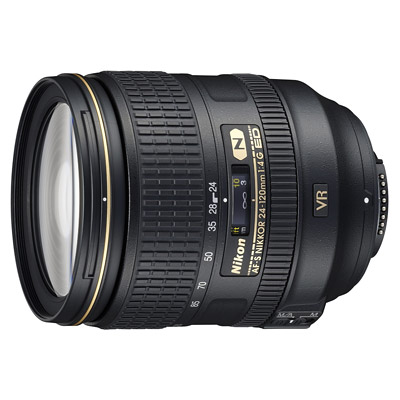 | Nikon AF-S 24-120mm f/4 G ED VR Pros: Very valid for general use, it prefers portraits and generally photos with separation of the planes to the landscapes and architecture, excellent blur, good colors, well-corrected aberrations, lens built to make pleasant photos. Cons: Hard and not very fluid zoom, sharpness collapse and 70 and 90mm. Opinion: Very short answer: up to 24Mpx with AA filter of the D750 goes from discreet to very good while on the 36Mpx without AA of the d810 fatigue at the level of resolution, so in reading the reviews keep this in mind. I use it on d750 and therefore my review is based on 24Mpx, not very much to tell the truth as I have a set of fixed 1.4 that I prefer more than anything else for philosophy, but when I do it rarely disappoints me and I wonder why I do not use it more often. Resolution more than valid already from the entire aperture up to about 70mm, beyond which it has a very important collapse (confirmed by online instrumental tests) and then recover well from 90mm upwards. Chromatic aberrations always well corrected for clean images (just a little at the edges at 24mm, solvable in post). So even if sometimes the images can be a soft hair, they are always pleasant as they are free from aberrations (and for this reason sharpening is particularly effective). Bright colors, the blurred is so beautiful in all its phases and at all the apertures that in most situations it does not fear comparisons with the fixed in terms of quality (very close to the creamy 85mm 1.4G and 180mm D, far better than the 50mm 1.8G). I consider him in general a surprising all-rounder for general use, portraits, flowers and all those situations in which you want to isolate the subject (yes, even at f4 you can do it well) while in the landscape push sometimes it seemed not very incisive. That cartoon and distorts a lot is known but in 2021 it is a lesser evil. Construction very well done except for the zoom mechanism, too hard and really not very fluid, in addition to the ridiculous focus ring that looks like that of the 18-105. Ultimately, a lens made not to split the instrumental tests but to make beautiful photos, and with the exception of the range between 70 and 90mm succeeds very well. sent on November 15, 2021 |
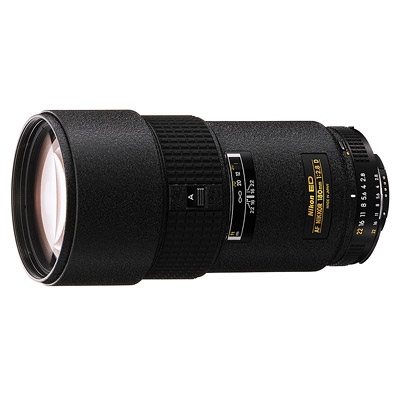 | Nikon AF 180mm f/2.8 D ED IF Pros: Colors, sharpness at all apertures, blurred, construction, precise autofocus, absent aberrations, creates magic. Cons: A bit of purple fringing on the spot reflections, unprotected diaphragm bayonet side. Opinion: I use it on d750, I have an immaculate specimen and I bought it more to test the fame of what is considered one of the best nikon lenses ever than out of necessity. Optimized to be used at full aperture, it maintains the same performance at all apertures and at all distances, at least on 24mpx. Someone says that closing gains a hair but my specimen has a crazy detail already at 2.8 and despite numerous tests I have never found the slightest difference closing. Even the online tests diverge in this regard so maybe it's a matter of specimens and I was lucky? Dunno. The colors are beautiful, natural and alive with zero chromatic deviations, warm but never yellow, aberrations totally absent (just a little purple fringing on reflections in extreme conditions). As a comparison I have two nikon 85mm 1.4 D and G and a sigma art 35mm 1.4. It has a color rendering that is halfway between the two 85, much better rendered at TA, it is also more constant in performance and definitely easier to use with good results (but this is also intrinsic in different focal lengths and apertures) difficult to really miss a shot. Quality of the blur really at the highest levels in all its phases. Making a complete comparison is clearly difficult because of the very different focal lengths but I assure you that it does not fear comparisons. Obviously feels the weight of the years the anti-reflective treatment, combined with a comfortable but small hood and therefore not very effective. The autofocus is of a total precision and consistency. The focus ring has a remarkable feeling like the old manual focus and significantly better than the 85mm 1.4 D. Technicalities aside, it is the definitive telephoto lens and simply a perfect lens that creates magic in any situation, from portraits to landscapes, very easy to use and that makes you fall in love from the first shot. I bless the day I decided to take it, if I think of all my kit the only lens that I will never give away is this. Let's be clear the focal length has a fairly limited use (hence the little market and the low price in the used), if you shoot for work a 70-200 will guarantee you the versatility necessary to take home the loaf but if you take for passion I assure you that you will find every excuse to use it. sent on November 14, 2021 |
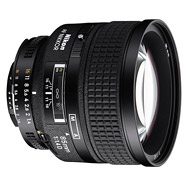 | Nikon AF 85mm f/1.4 D Pros: Perfectly balanced color rendering for sweet and exciting portraits, sharpness in the center, fantastic blurry both behind and in front of the subject, construction. Cons: Very mediocre extreme edge yield, sensitive bokeh fringing, backlight resistance, dust intrusion resistance. Opinion: sent on November 13, 2021 |
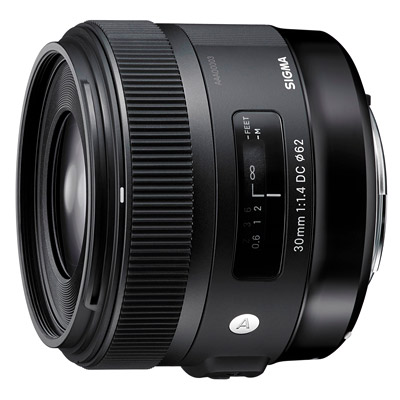 | Sigma 30mm f/1.4 DC Art Pros: Colors, blurry, sharpness, construction, resistant to dust and water even if officially not tropicalized, for portraits is even better on FF Cons: Barrel distortion, the clamping clip of the hood tends to wear out (it resolves with a superglue tip). Opinion: Professional lens for optics and construction, by far the best in normal focal lengths for right (at least on nikon) if not the best ever. I traveled there for 1 year from China to the Middle East: all my equipment came back battered while this lens is the same as new and despite officially not being tropicalized inside it does not even have 1 grain of dust. Extremely underestimated optics, the vote here on juza can only be affected by the fact that many right users do not have a camera with fine AF adjustment, they do not have the experience to manage an f1.4 lens or to appreciate a high-level glass because really a rating of 8.9 when bottle bottoms have 9+ does not make sense. Used for years on d90 and then on d750 (I recommend, on FF without hood!), incredibly it is on the latter that gave me the greatest satisfaction. It perfectly covers the aps-h format (36mm equiv) and for photos with FF subject isolation it gives splendid results with a "romantic" vignetting formed by light drop and loss of sharpness, more immersive and "real" than that which is obtained simply by darkening the edges in post. Remarkable sharpness (very high even at f1.4 at short distances, an f2 blade), but the thing I find truly extraordinary is the ability to return balanced and vivid colors even in dirty light conditions, where my other lenses (including the Nikon 85mm 1.4G and 50mm 1.8G, 18-105, 24-120 f4) show the side. After years I bought the FF 35mm art version and they have the exact same character. Contrasted even in full-aperture backlight. In my case the AF on d750 works perfectly and consistently with only fine calibration in the machine. It was fairly fine even on the d90 which has a dated and no adjustment AF. The valid blur, the beautiful and particular color rendering typical of the art, the high microcontrast and the soft and aberration-free fire-out transition zone even at full aperture give images of great three-dimensionality. If you use it on ff the subjects seem to come out. The 50mm 1.8G has remained almost always in the backpack and the 85mm 1.4D I have not seen it in the same way. If you take pictures for the holidays ok, but if instead you aspire to serious results anyone who understands a minimum of photography knows well that the comparison with the 35mm 1.8 dx or the various 50mm nikon is not even to think. A pleasure to use, I would buy it another 1000 times. sent on November 12, 2021 |
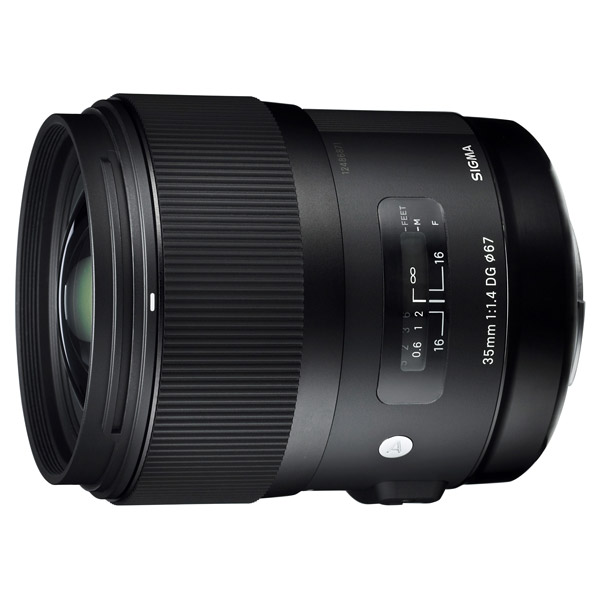 | Sigma 35mm f/1.4 DG HSM Art Pros: Practically everything, color rendering in the first place Cons: MAF ring hard to rotate (as well as other art I tried) Opinion: I use it on D750. Optics destined to have a prominent place in history both for performance and for having been the progenitor of the ART line. There is a lot of talk about sharpness, certainly exceptional, but the thing that is truly extraordinary about this lens is the ability to return balanced and vivid colors even in flat or strongly dirty light conditions, where my other optics (including 85mm 1.4G, 50mm 1.8G and 24-120 F4) give up completely. I also owned the 30mm version for dx and they share the same beautiful character, with the 35 just a bit higher in performance. The colors are neutral and very contrasted, I personally love them. I do not know if it is the exact term but I know that very difficult to get those yellowish faces that are difficult to remove even in post. Compared to nikon I would say that they simply have different characters that express different emotions, with art devoted to drama and nikon to relaxation. Just look at the gallery below and compare it with those of the fixed Nikkor to understand the considerable difference. Contrasted even in full aperture backlight, in my case the AF worked well with only fine calibration in the car and the impression is that the accuracy is comparable or better than my other Nikkor lenses. Calibration by doc is still recommended because a lens of this caliber must be used to its full potential. The decidedly valid blur, the particular color rendering typical of the art, the high microcontrast and the fire-out of focus transition zone free from chromatic aberrations even at full aperture give images of great three-dimensionality. About 400 € in the used is a nonsense for the lens that will be a reference point for all your kit. sent on November 11, 2021 |
 JuzaPhoto contains affiliate links from Amazon and Ebay and JuzaPhoto earn a commission in case of purchase through affiliate links.
JuzaPhoto contains affiliate links from Amazon and Ebay and JuzaPhoto earn a commission in case of purchase through affiliate links.May Beauty Be Everywhere Around Me